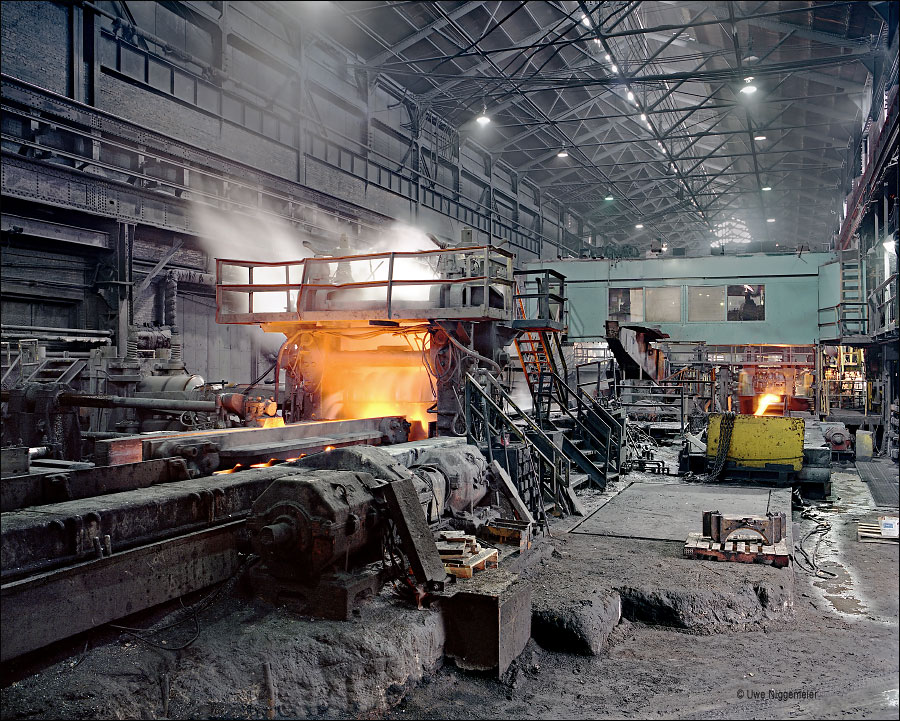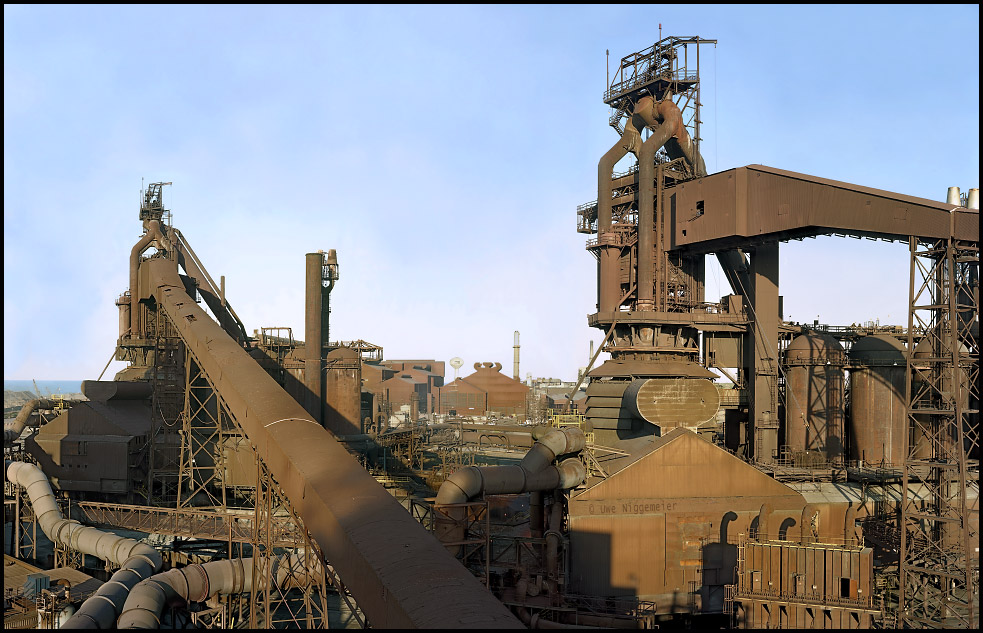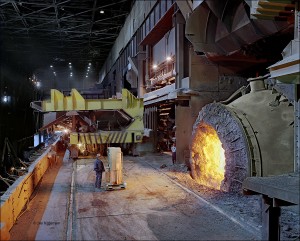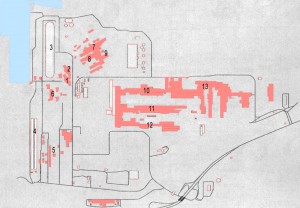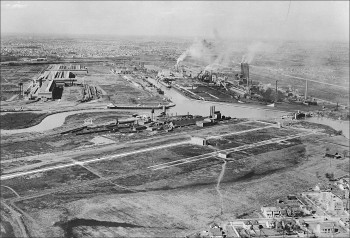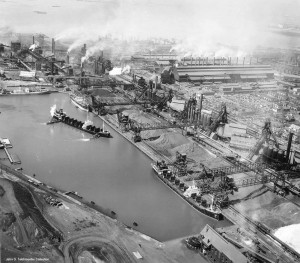The Steelton plant was founded in 1867 by the Pennsylvania Steel Corp.. It was the first mill in the U.S. built exclusivly for the production of steel.Main product were steel rails already.
Three blast furnaces and a Bessemer mill were erected along the Susquehanna river in the late 19th century
In 1917 the mill was taken over by Charles Schwab’s Bethlehem Steel Corp.
The blast furnaces were closed for good in 1960.Steel was produced now by remelting scrap in open hearth furnaces only.
The open hearth furnaces were replaced by electric arc furnaces in 1968.A continuous caster was installed in 1983.
In 2001 the Bethlehem Steel Corporation went bankrupt and was taken over by ISG which later became part of ArcelorMittal.
Today ArcelorMittal operates a 150 ton electric arc furnace, a continuous bloom caster, a 44” blooming mill, a 20” bar mill, and the 38-25” rail mill at Steelton. Large scale ingot teeming is still done also.
Steelton is one of only three remaining rail producers in U.S. today.
Tag Archives: USA
Burns Harbor: The last integrated steel mill built in the United States.
50 years ago the Bethlehem Steel Company from Pennsylvania started building a new, state of the art, integrated mill on the banks of the Lake Michigan. 3000 acres of land, neighbouring US Steel’s Gary works, were purchased and construction started in late 1962. Probably few could have imagined that Burns Harbor would be the last integrated mill in the U.S. to be built until today.
In 1964 the 160 “ plate mill was started followed in 1966 by the 80” hot strip mill. In between 1969 and 1972 two blast furnaces, a coke plant (164 coke ovens) and a steel mill, containing two 300 ton BOF vessels were started.In 1975 Bethlehem Steel’s first continuous slab caster started production. In 1978 a 110” plate mill and a third BOF vessel became operational.In 2000 the last ingots were poured.
After filing bankruptcy Bethlehem Steel was taken over by the International Steel Group (ISG) in 2003. Two years later Burns Harbor became part of Mittal Steel USA (ArcelorMittal since 2007).
Further images.
1: Blast furnace C
2: Blast Furnace D
3: Ore storage
4: Coal Storage
5: Coke plant
6: Sinter plant
7: BOF shop
8: Slab caster 1
9: Slab caster 2
10: 80″ hot strip mill
11: 160″ plate mill
12: 110″ plate mill
13: Cold rolling mill
The largest factory in the world..
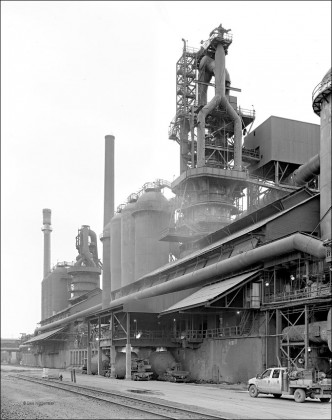 ..employing up to 100000 people was built 95 years ago in Dearborn, Michigan. The Krupp works in Essen, Germany once had 104000 people on the payroll but that was only in war times (1918).
..employing up to 100000 people was built 95 years ago in Dearborn, Michigan. The Krupp works in Essen, Germany once had 104000 people on the payroll but that was only in war times (1918).
Anyway, the Ford River Rouge plant was remarkable with the unique vertical integration of it’s production cycle.
From iron ore to rubber and glass any kind of raw materials could be processed on ground and could be transformed into finished cars in less than 50 hours.
In 1989 the Ford company sold it’s integrated steel production to the Rouge Steel Co. which was taken over by Russian Severstal in 2004. Some images from that year.
The image shows the older blast furnaces ‘A’ (from 1920) and ‘B’ once called Henry Ford II and Benson Ford.
Sparrows Point to be scrapped ?
In August the 120 year old steel mill east of Baltimore was sold by it’s last owner, bancrupt RG Steel, to a liquidator . Sparrows Point, once owned by the Bethlehem Steel company, was the largest steel mill in the world by the end of the 1950ies, even larger than US Steel’s Gary works.
Sparrows Point used to be the only integrated steel mill by the sea in North America. Chances for a reanimation seem to be slim.
Today the site is already widely desertet.

